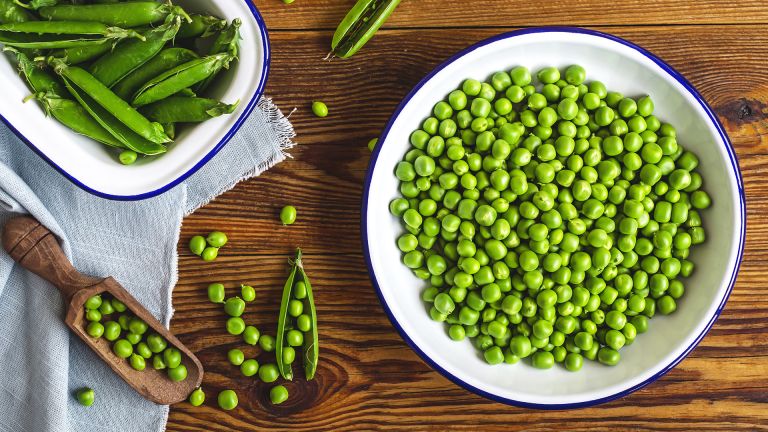
Chickpea is one of the most consumed legumes which is used in original and local Iranian foods such as broth, noodle soup, etc. Although peas are found in abundance, but planting it has its own principles. To know the method and principles of chickpea planting, follow the contents.
ALL ABOUT PEA PLANTING
Introducing chickpeas
Chickpeas are the kind of beans that are in two types (winter and summer). The type of winter chickpea has small seeds that are mostly planted in eastern Asia and Iran. Winter type peas are small plants appear with pink flowers. The seeds of these chickpeas are in different colors and have anthocyanin color.
Summer type chickpeas also have large cream seeds. The type of summer chickpeas are planted in West Asia and Iran. These plants do not have anthocyanins and appear with white flowers. These chickpeas are also known as mediterranean chickpea.
How to plant chickpeas
Farmers plant chickpeas during march to May, and if the soil is not eroded, plowing is also done in autumn.
The depth of plowed soil should be 10 to 12 cm. Also, the land for planting chickpeas, in addition to being fertile, must be weed-free. Farmers plant chickpea seeds in the early days of spring if the soil temperature is not below 5°C. Chickpea seeds should be planted at a depth of 2.5 to 6 cm and in rows with a distance of 15 cm. The remarkable point is that sequential planting of chickpeas in a field increases the number of insects and diseases, so it is needed that every 4 to 5 years, Chickpeas are grown once in the field.
During the flowering period, chickpeas need temperate weather conditions, and hot weather cause stress for the plant, so as a result, the product gets reduced.
The most suitable temperature in the day is 35 degrees and at night 14 to 15°C. It should also be stated that chickpea is a long day plant, i.e. the length of the day and the temperature determines the date of flowering, cloudy air and high humidity reduce the seed storage.
Preparation of planting bed
Observing the technical principles of land preparation operations in order to store maximum moisture in the soil is very important in the optimal use of soil moisture. The application of the return plow causes the loss of stored moisture in the soil. The use of pen plows, goose claws to prepare the cultivated land can be very effective in maintaining soil moisture.
Seed Selection
Disinfected seeds are used against fungal and winnowing diseases.
Chickpea plants need 30 plants per square meter for optimal production.
Time and depth of chickpea planting
Planting time is one of the most important and effective factors in achieving high yield in chickpea. Delay in chickpea planting reduces growth period and decreases yield. Autumn cultivation (November 6th to December 6th) is carried out in cold temperate, semi-tropical and tropical regions and spring cultivation in cold areas is done in late winter or early spring. Chickpeas should be cultivated at a depth of 5 cm in the soil.

Chemical fertilizers
Chickpea does not require much nitrogen fertilizers in terms of stabilization of free air nitrogen by its roots and consumption of nitrogen after stabilization of nitrogen. The application of 20-30 pure nitrogen in each land is essential when growing chickpeas.
If the soil P is less than 6 ppm, Phosphorus up to 6 ppm is recommended.Most of the advanced farmers control their farms’ weed with manual weeds, which is not cost effective in terms of its high cost and time-consuming, so it can be controlled by mechanical and chemical methods of weeds in chickpea fields.
Weed control
1- Mechanical control: The cropping row distance for chickpea planting is 25-30 cm. At the time of cultivation, by closing a fall pipe after two falling pipes in the row of Hacia, cultivating spreader or other work rows that can create a row distance of 50 cm, using a narrow wheel tractor and collator, weeds can be controlled at a distance of 50 cm.
2- Chemical control: By Using the selected herbicide supergalant (1 liter per hectare) or gallant (2 liters per hectare) Annual broadleaf weeds can be controlled in chickpea fields.
Pest Control
Cocoon worm is one of the most important pests of chickpea that causes a lot of damage to chickpea fields every year. Using one of the suitable toxins such as Swin, Diptrex and Larvin in the amount of 3, 1.5 and 1 kg/ha at the time of the emergence of maximum small larvae, which coincides with the mid-flowering and early formation of pods in the plants, chickpea cocoon eating worm can be controlled.
Four-point beetle which can be controlled from important storage pests using 0.5 g/m3 phosphine during 72 hours ofgasification.
Controlling patients
Ascochyta rabiei is One of the most important fungal diseases that causes a lot of damage in both spring and autumn crops in chickpea fields each year, the damage of this disease in autumn cultivation is more than spring cultivation, all local cultivars such as Bionigum in Kermanshah, Great in England, Jam in Ilam, Cyrus in Golestan and other local cultivars in other provinces are sensitive to the disease of electricity. The most appropriate way to control this disease is to use cultivars that are resistant or tolerant to lightning disease
Hashem and Arman and Azad's figures are resistant to this disease.
Fusarium disease: Fusarium wilting itself is another important patient of chickpea that damages chickpea fields mostly in spring cultivation. This disease is caused by Fusarium axyporium fungus, considering that the management of soilborne diseases is difficult and the application of a specific method is unable to effectively control the disease. Crop rotation, change of pea planting time, use of disease-free seeds, removal of contaminated debris and use of seed disinfectants are some of the recommended methods to control this disease. All local cultivars are susceptible to this disease. Due to the fact that the fungal spores of Fusarium wilt retain their survival in the soil for up to 5 years, so it is recommended to refrain from cultivating chickpeas for 5 years in lands infected with this disease.






User comments